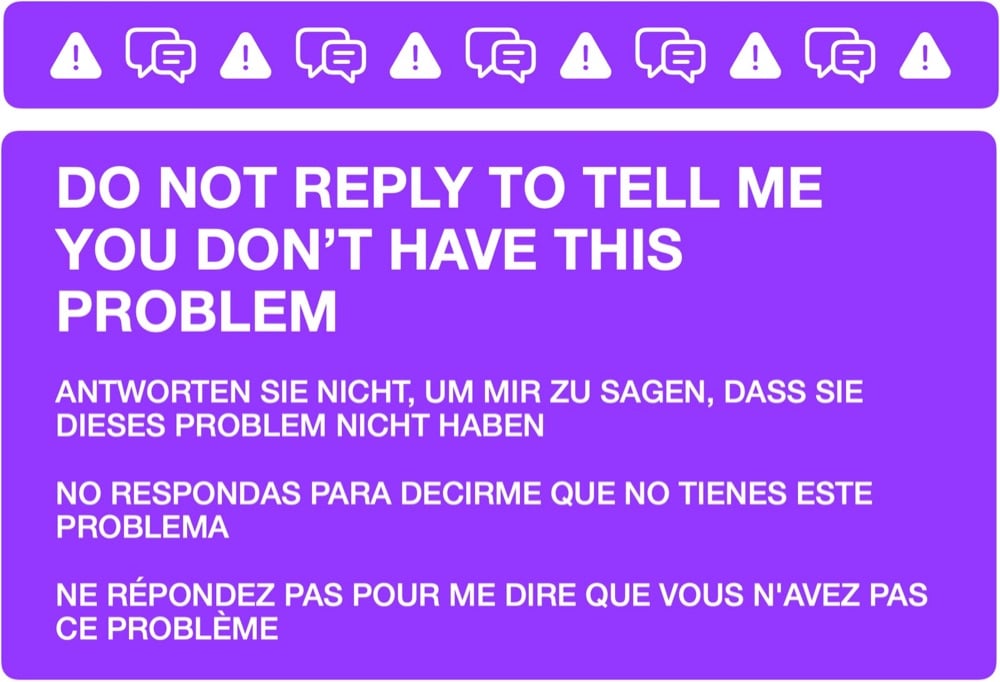
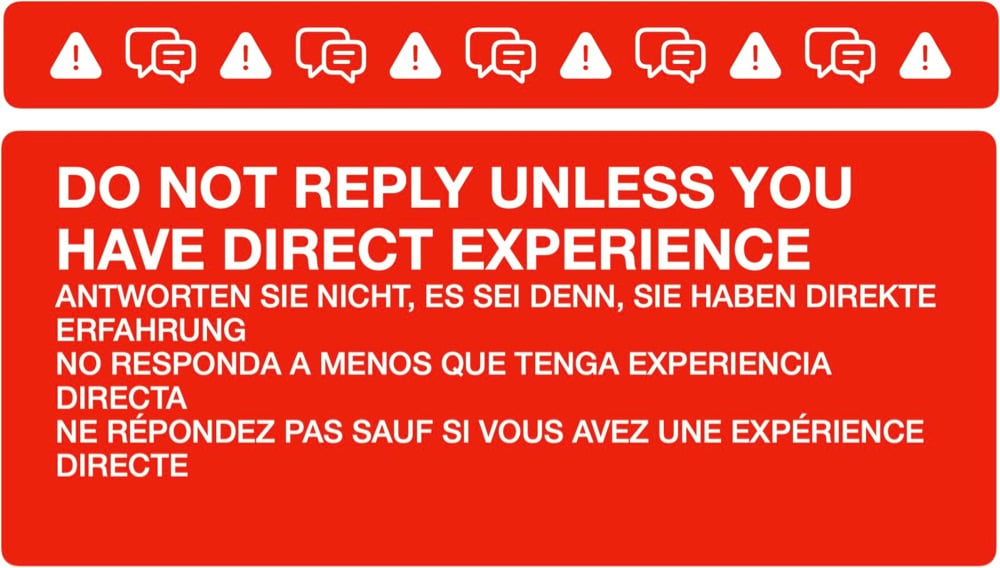
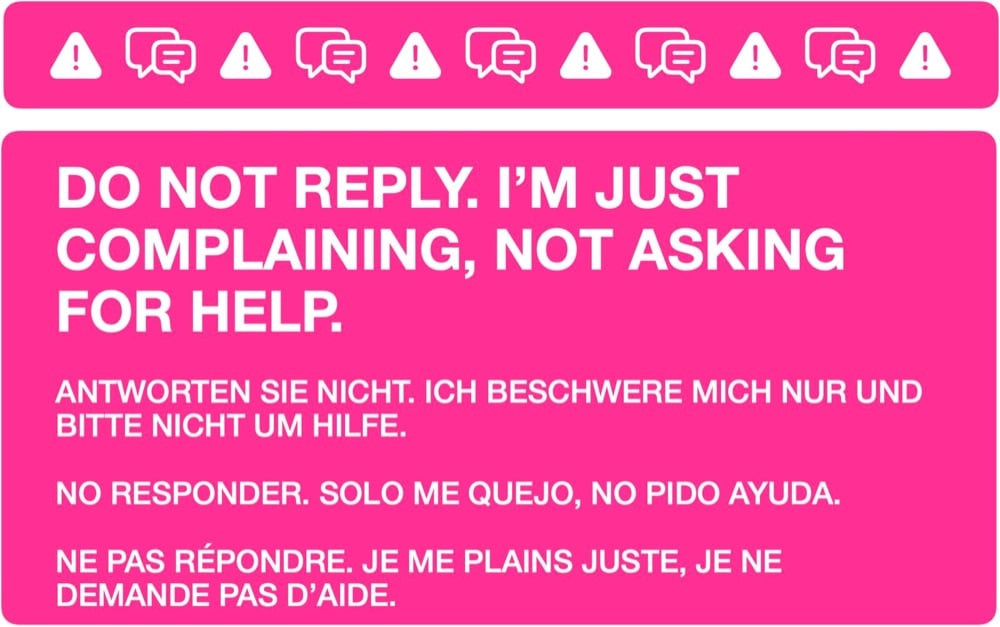
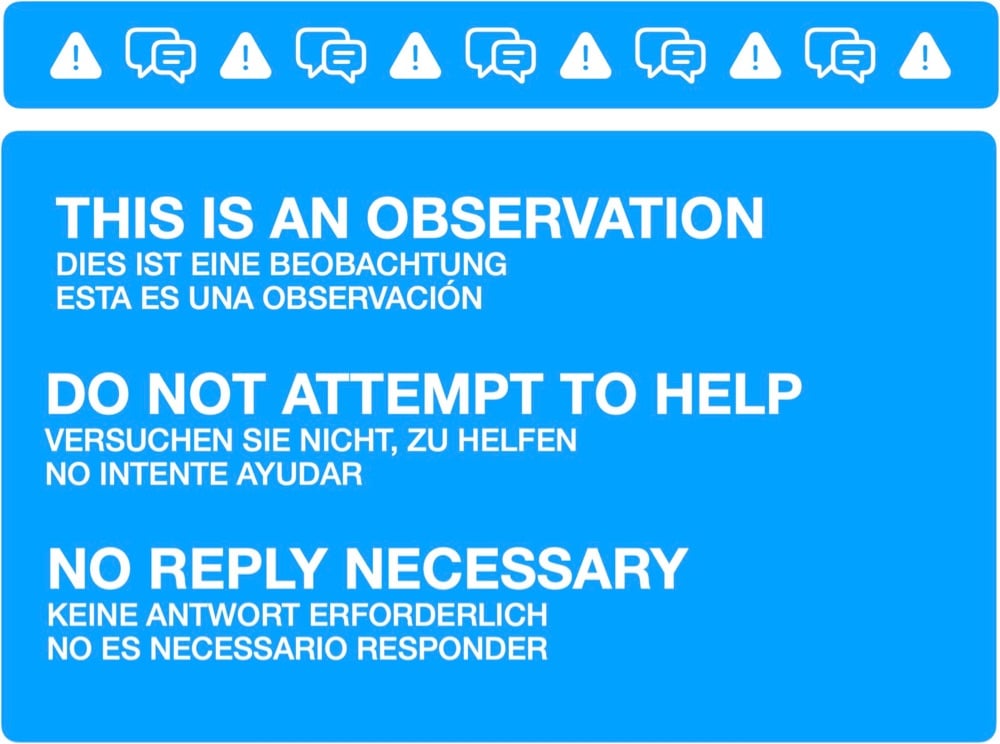
Dan Hon: “Over on Mastodon, which has a Kind of Person, I made these images to attach to help people manage replies.” These are aces — I’ve included my personal favorites above. You can find the whole set here on Flickr or here with alt text.
These pair well with Rebecca Solnit’s recent piece on How to Comment on Social Media. (Dan, could I get one that says something about reading the link before replying?)
For Real Life magazine, Drew Austin writes about wireless headphones and their potential effect on the public sphere if many people start wearing them. The bit that particularly caught my eye was the subtitle of the piece:
Wireless headphones are augmented reality devices.
And further down the page:
Much as phones have enabled and concretized the always-on nature of everyday life, introducing the constant interpenetration of physical and digital space to individual experience, wireless earbuds facilitate a deeper integration, an “always in” existence that we need never interrupt by looking down at a screen. Their aural interface means we don’t have to awkwardly switch attention back and forth between IRL and a screen as though the two are starkly separated. Instead, we can seem to occupy both seamlessly, an experience that other augmented-reality devices, like Google Glass, have promised with varying degrees of success.
I bought some AirPods several months ago thinking I was getting wireless headphones, but very quickly realized they were actually an augmented-reality wearable computer. In my media diet post from May, I called them “the first real VR/AR device that feels seamless”. Like regular wired earbuds or even over-the-ear Bluetooth headphones, AirPods provide an audio track layered over the real world, but they’re so light and let just the right amount of ambient sound in that you barely notice you’re wearing them — it just sounds like whatever you’re listening to is playing in your head, automagically. It feels, at least to me, like a totally different and far more immersive experience. Wearable computing still seems like a futuristic thing a few years away, but with AirPods and the Apple Watch, it’s solidly here right now.
P.S. In Dan Hon’s latest newsletter, he writes:
Given current phone/camera trends (or, I should say, current camera/phone trends), the Star Trek: TNG combadge is unrealistic because by the 24th century it’d be more like 99.9998% camera and 0.0002% phone.
The natural ancestor of the combadge seems more like AirPods than the iPhone. But the likelihood of AirPods 6.0 having a tiny camera embedded in it for, say, the facial recognition of whoever you’re speaking with (a la Miranda Priestly’s assistants in The Devil Wears Prada) or text-to-speech for whatever you’re looking at (signs, books, menus) seems quite high.
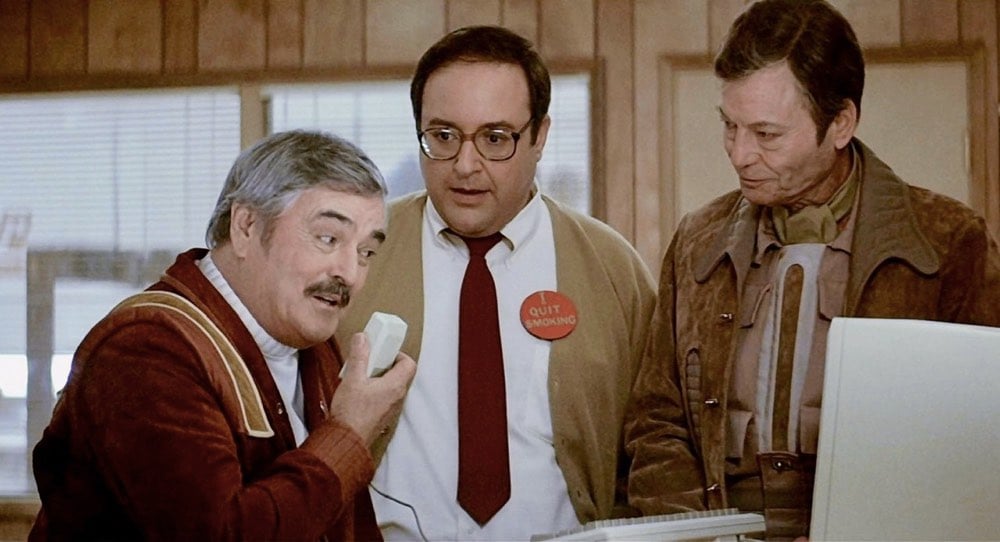
Dan Hon, who you may remember trained a neural network to make up British placenames, has now done the same thing with Star Trek. He fed all the episode titles for a bunch of Treks (TOS, DS9, TNG, etc.) into a very primitive version of Commander Data’s brain and out came some brand new episode titles, including:
Darmok Distant (TNG)
The Killing of the Battle of Khan (TOS)
The Omega Mind (Enterprise)
The Empath of Fire (TNG)
Distance of the Prophets (DS9)
The Children Command (TNG)
Sing of Ferengi (Voyager)
Spock, Q, and mirrors are also heavily featured in episode titles.
Dan Hon recently trained a neural net to generate a list of fictional British placenames. The process is fairly simple…you train a program on a real list of placenames and it “brainstorms” new names based on patterns it found in the training list. As Hon says, “the results were predictable”…and often hilarious. Here are some of my favorites from his list:
Heaton on Westom
Brumlington
Stoke of Inch
Batchington Crunnerton
Salt, Earth
Wallow Manworth
Crisklethe’s Chorn
Ponkham Bark
Buchlingtomptop
Broad Romble
Fuckley
See also auto-generated maps of fantasy worlds.
Update: Tom Taylor did a similar thing last year using Tensorflow. Here are a few of his fictional names:
Allers Bottom
Hendrelds Hill
St Ninhope
Up Maling
Firley Dinch
There’s also an associated Twitter bot. (via @philgyford)
Also, Dan Connolly had a look at the etymology of the names on Hon’s list.
Buncestergans. At first glance this doesn’t look a lot like a place name but let’s break it down. We’ve got Bun which is definitely from Ireland (see Bunratty, Bunclody, Bundoran) meaning bottom of the river, and I believe we’re talking bottom as in the mouth rather than the riverbed (or there are whole lot of magical lady-of-the-lake towns in Ireland, I’m happy believing either). Cester is our Roman fort, then we have -gans.
I don’t think gans has any meaning in British place names. My guess is the net got this from Irish surnames like Fagans, Hagans, Duggans, that sort of thing. My Gaelic’s not so great (my mother, grandmother, and several aunts and uncles would all be better suited to this question!) but I think the -gan ending in Gaelic is a diminuitive, so Buncestergans could be the Small Fort at the Bottom of the River. I quite like that. It’s a weird Gaelic-Latin hybrid but why the hell not!










Stay Connected